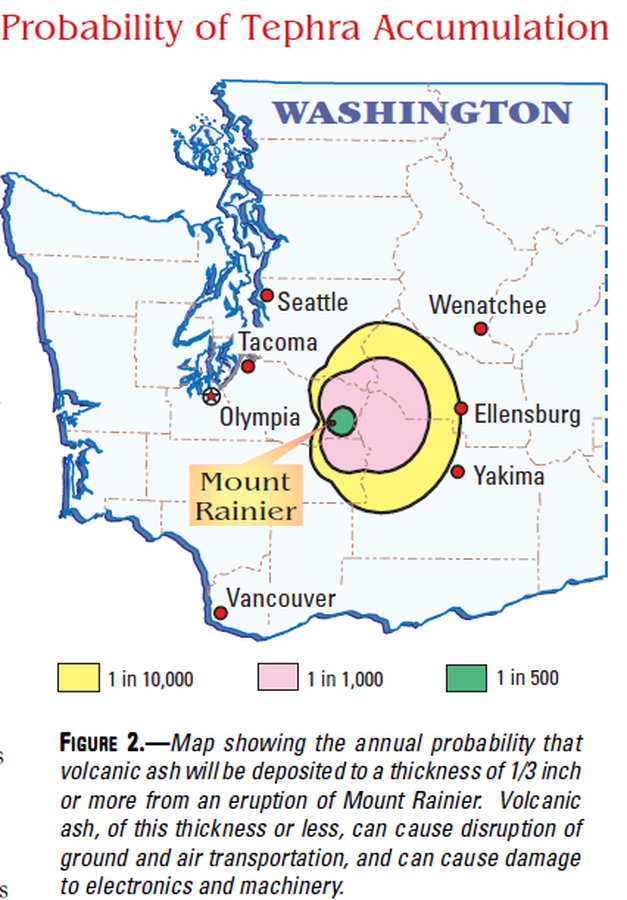Probability of Tephra Accumulation
Rainier, United States, 2002
Figure 2 in: Driedger, C.L. & Scott, K.M. (2002). Mount Rainier: learning to live with volcanic risk. U.S. Geological Survey, Fact Sheet 034-02, 4 p. https://doi.org/10.3133/fs03402
This map was produced by an official agency, but is NOT the most recent, most complete, or main operational map.
For the current operational hazard map, please consult the proper institutional authorities.

Click on image for full-size map. If link seems broken, try the archived version.
Driedger, C.L. & Scott, K.M. (2002). Mount Rainier: learning to live with volcanic risk. U.S. Geological Survey, Fact Sheet 034-02, 4 p. https://doi.org/10.3133/fs03402Map Set
https://doi.org/10.3133/fs03402
Other Maps In Set:
Map Data
Map ID 1394 Hazard Process(es) Tephra fall Hazard Zone Presentation Single hazard: A single hazard process is represented on a main map panel Temporal Scale Background, or long-term, map Spatial Scale Regional Publication Format Map in a booklet, longer fact-sheet, handbook, or guidebook Zonation Method(s) Scenario modeling Zonation Model(s) Unnamed tephra model [Hoblitt et al. (1987); Hoblitt & Scott (2011)] (Hoblitt et al. 1987; Hoblitt & Scott 2011) Scenario(s) Considered Analog volcano(es) Hazard Zone Label(s) Numeric probability Probability Definition(s) Annual numeric probability Purpose Hazard awareness: Intended for educating the audience about the extent and probability of volcanic hazard Audience General public and/or media Language(s) English Basemap(s) Administrative boundaries (e.g. county, park, intl.) Basemap overlay(s) Diemsionality Planimetric (2D or map) view Color Scheme Categorical/Qualitative
